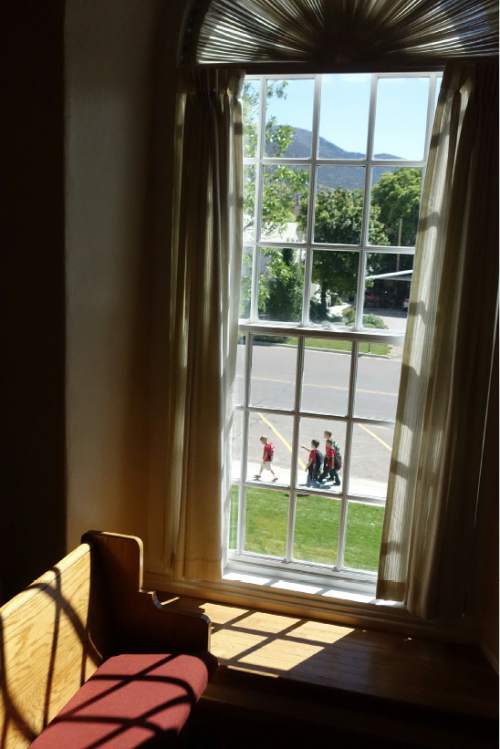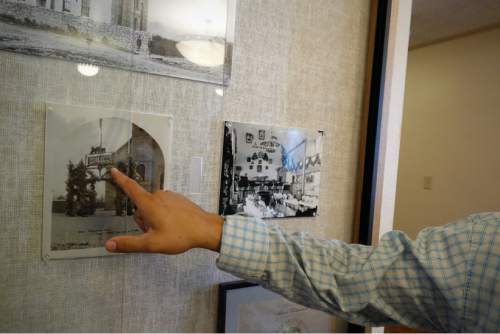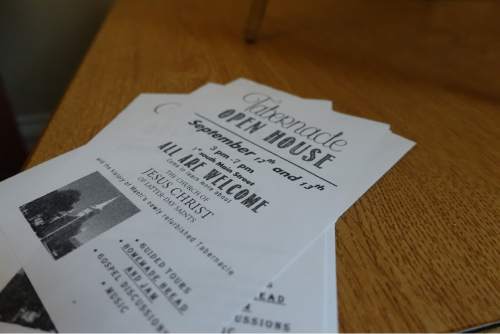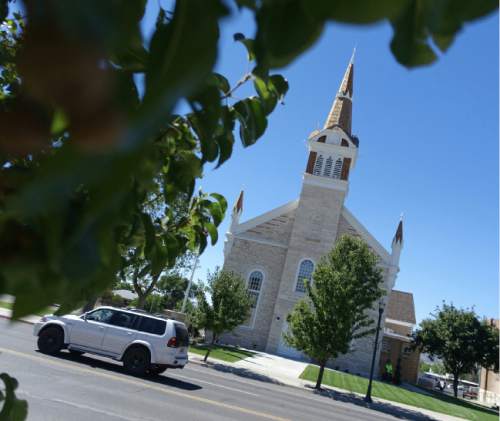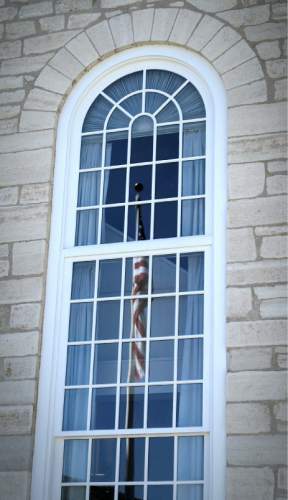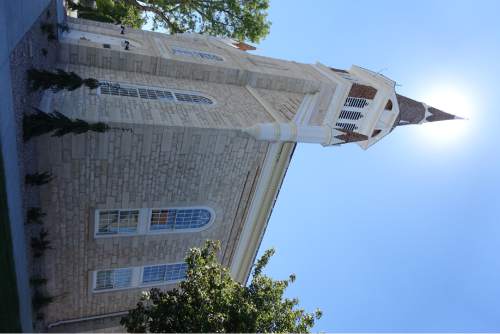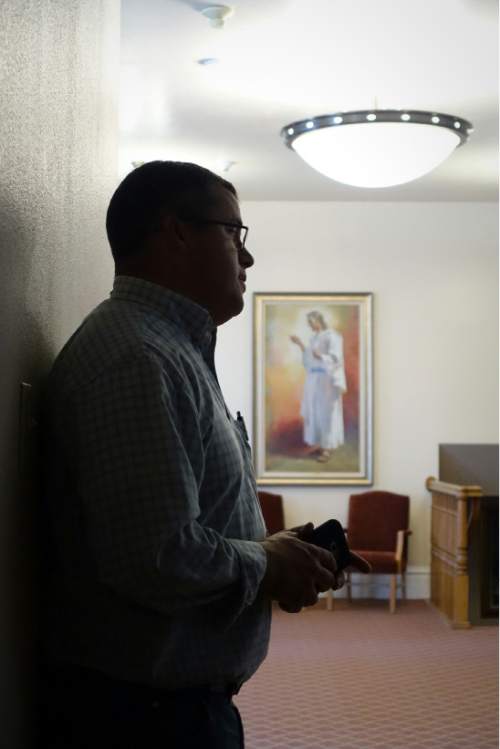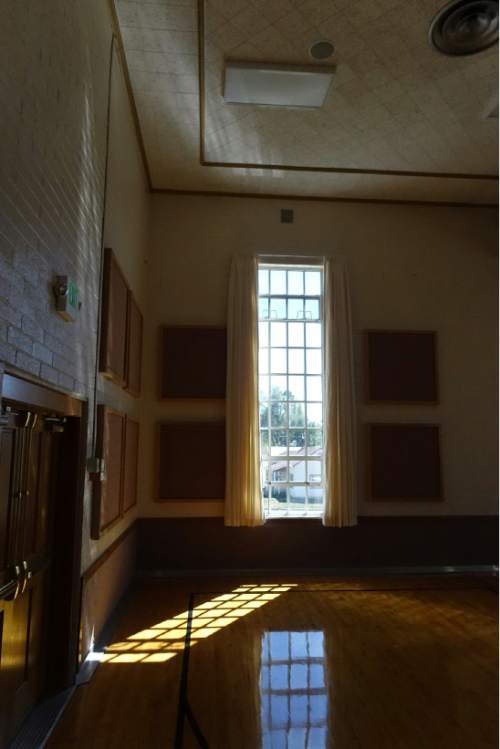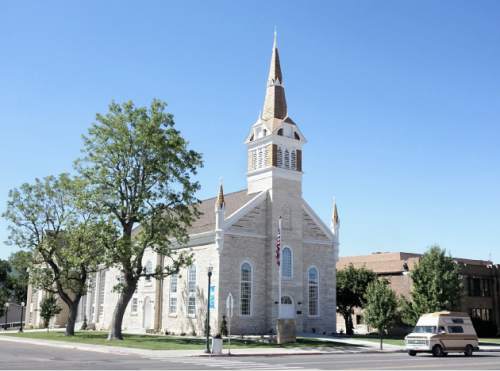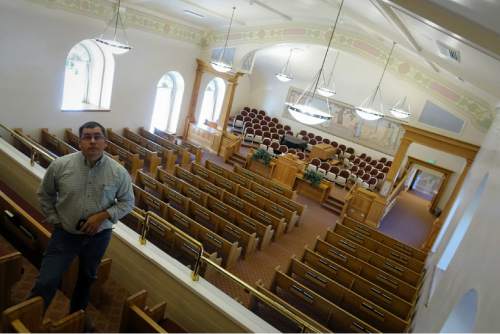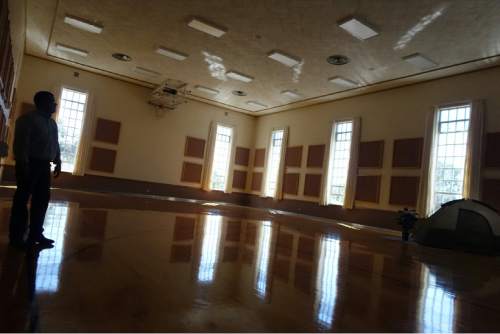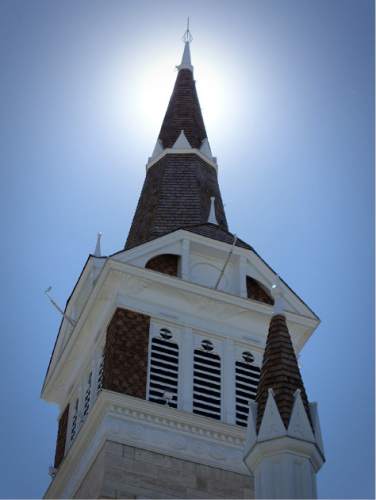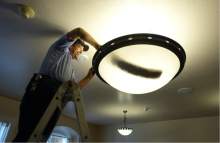This is an archived article that was published on sltrib.com in 2015, and information in the article may be outdated. It is provided only for personal research purposes and may not be reprinted.
Manti • More than 100 years after his great-great-great-great-great-grandfather Isaac Morley led the first Mormon settlers into Manti, Matt Christensen stood in the town's tabernacle, reviewing the restoration work he oversaw as a church facilities manager.
With a staff of professional architects, historians and even an artist, the restoration team took care to preserve — and, in some cases, reveal — the building's unique 19th-century details.
"The whole intent of this project," Christensen said, "was to make sure that when people walk in, they won't notice anything different."
But the place is different, even if those differences are hidden from the casual viewer. After more than a century of wear and tear, the Manti Tabernacle needed a significant structural overhaul. But because of the building's cultural significance, Christensen said, The Church of Jesus Christ of Latter-day Saints didn't want to scrap the old tabernacle, which is now used as a meetinghouse for the Manti First and Second LDS wards, or congregations. Instead, the church assembled a team of experts to upgrade the old building without damaging its historical integrity.
Renewal • The bulk of the project involved reinforcing the tabernacle walls with steel beams attached to stone footings. Christensen said the restoration team wanted to avoid disturbing the original masonry, so the beams were inserted into tubes drilled into the middle of the walls, from top to bottom. The tabernacle walls were built out of two facing layers of stone blocks, Christensen said, so the beams could be inserted into the space between those layers, which were originally filled with waste material.
The tabernacle also got a new roof and climate-control system and, on top of the structural work, had interior and exterior details such as woodwork, paint, flooring and light fixtures completely refurbished. The entire process, Christensen said, involved four years of planning and a year and a half of construction.
Maintaining vision • Through all that, Christensen said, the goal was to maintain what LDS Church historians believe was the builders' original vision for the tabernacle.
"The blood, sweat and tears of those people who gave everything to worship God the way that they please in a peaceful environment," he said, "we want to preserve that."
Even within Mormon architecture, tabernacles are unique structures. Originally, they were built as special places for large religious meetings. They were not LDS temples, which are reserved for special religious rituals for members only, nor were they intended as everyday churches or meetinghouses. The Utah-based faith no longer builds tabernacles; the closest modern equivalent, Christensen said, would be something like a stake center, regional meetinghouses that host a number of Mormon congregations.
Humble beginnings • The Manti Tabernacle has its own history even within that context, Christensen said. The first Mormon settlers arrived in Manti, about 125 miles south of Salt Lake City, at the direction of LDS leader Brigham Young.
They came to the area believing that Young had promised that the church would build a temple in Manti. So as they went about building their first streets and dedicating plots of land, they set aside an area on Main Street, designated the "temple plot." But time wore on and years passed before Young issued the edict to construct a temple in Manti. In the meantime, the settlers got tired of waiting, so they started building a temple without official direction to do so.
That building became the Manti Tabernacle after Young approved another site, Temple Hill, for the construction of the Manti Temple.
The settlers' original intentions for the tabernacle are evident in its spires — reminiscent of the iconic Salt Lake City LDS Temple — and in the stone inscription above the front doors, which reads "Holiness to the Lord." But the interior looks like a cross between a modern LDS chapel and the inside of Temple Square's Tabernacle in downtown Salt Lake City.
A century of worship • The Manti Tabernacle's current appearance is the result of the evolution during its first decades of use, Christensen said. According to an LDS Church History Department report that was sent to professionals who worked on the restoration, the tabernacle was constructed in the 1870s and 1880. Due to the Manti settlers' poverty at the time, that first structure was relatively simple: a stone hall with a single low spire above the front entrance. Renovations after the turn of the century added more spires, a basement level with classrooms, intricate pastel artwork and a large mural depicting Jesus meeting the woman at the well.
Modern tools, original feel • All of these details were restored with as much historical accuracy as possible, Christensen said. An artist consulted with plaster specialists to save the mural, which had cracked and weathered. Special stencils were made to replicate the original abstract paintings that adorn the rest of the chapel, though Christensen said it was difficult to find modern paints that matched the original pastel hues. They don't make paint like they used to, he said.
The restoration also saved the original wooden columns that support the balcony in the tabernacle chapel. The columns are solid pillars cut from Douglas fir, the only suitable source of wood Manti's settlers had access to, Christensen said. Though the columns were in good condition, they were the sole support for the balcony, and that could have been problematic if the area experienced a major earthquake. To make the balcony more seismically sound, the columns where hollowed out and reinforced with steel beams, then reinserted under the balcony.
The entire process was finished with specialized interior plaster, period-oriented light fixtures and carpet designed to match what would have been used in the 1920s.
The back half of the building, an addition constructed in the 1950s to supplement the church's expanding programs with a basketball court, a stage for theatrical performances, more classrooms and offices also received renovations.
The next 100 years • All in all, Christensen said, the building should be good to go for another century of use.
And that's no small matter here in Manti, where news of the renovation's completion had already begun to draw visitors Friday. Many who came said they had cultural or family ties to the area.
Pauline Christensen, a Redmond resident, stopped by the tabernacle Friday to see the building where her grandparents had attended church.
"It's looks beautiful," she said. "I've watched [the construction], and it's well-done — restored, as opposed to renovated."
The restoration is also significant to locals, including teenager Jacquel Braithwaite, 17, who identified the tabernacle as the place where she grew up. She said she remembers the tabernacle fondly for its spiral staircases and for the influential sermons she heard earlier in her youth.
She hasn't seen the inside since the renovations began, Braithwaite said, but she said she hopes to this weekend.
Open to the public • The LDS Church hosted a public open house at the Manti Tabernacle on Saturday. It included guided tours of the building, musical presentations and, according to fliers circulated around town, homemade refreshments.
The tabernacle will be rededicated in a ceremony Sunday.
@EmaPen


